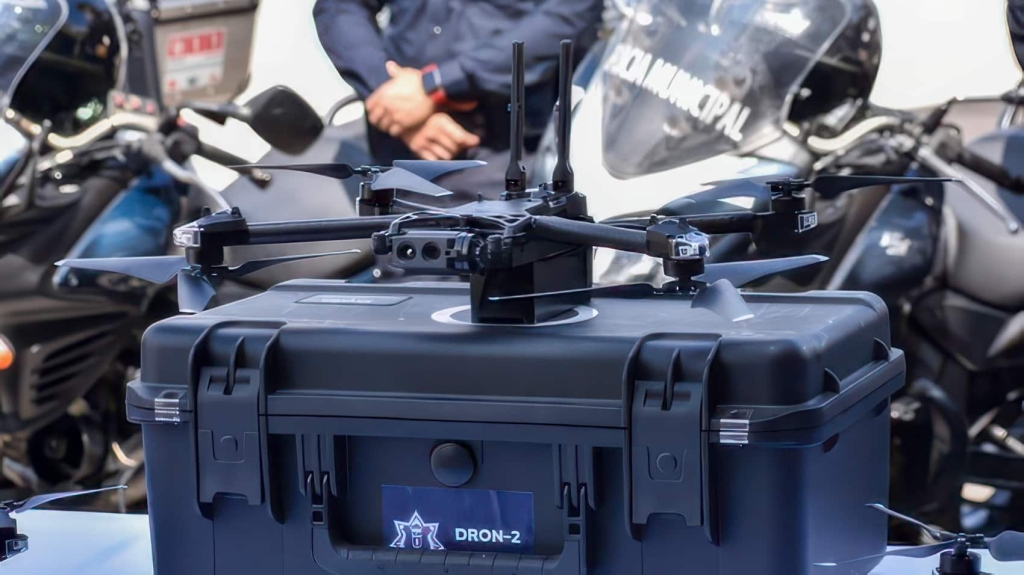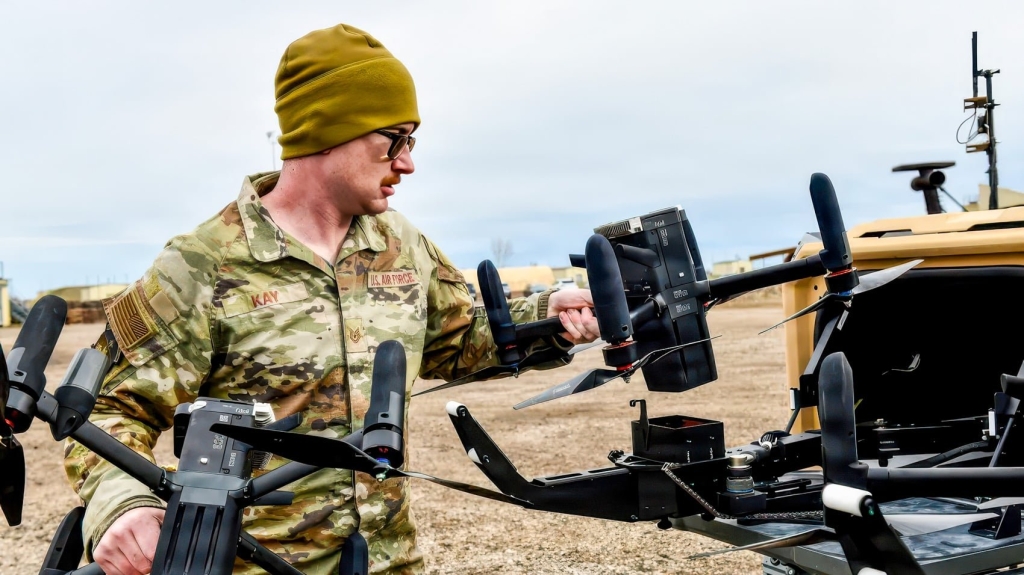Mexican Cartels Copy Drone Tactics Seen In Ukraine

Skyrover S1 Drones Now 15% Off With Amazon Coupon Plus DroneXL Discount Code
Last month, three explosive drones detonated outside a prosecutor’s office in Tijuana. The blasts shredded six vehicles with nails, BBs and metal fragments. Mexican officials later confirmed what many feared.
A cartel had carried out the attack. The unit targeted was part of the Baja state attorney general’s anti-kidnapping division, reports Defense News.
This was the latest sign that cartels are now embracing the same first person view drone tactics seen daily on the front lines in Ukraine. FPV drones, once used mostly by hobbyists and racers, have become flying precision weapons in modern warfare. Now those same methods are appearing in Mexico.

Defense News previously reported that cartel members traveled to Ukraine to join foreign volunteer units. Their goal was simple. They wanted real FPV combat training. That training now appears to be coming home.
Earlier this year, an FPV drone ambush in Chihuahua sent two soldiers and a police officer to the hospital. Authorities later seized three explosive drones connected to the attack. These incidents are not isolated. Explosive drone strikes surged past 260 in Mexico during 2023. In 2024, one drone attack on a rural community was followed by a ground assault that resembled infantry tactics.

Analysts warn that this shift represents more than just new weapons. It represents a change in the nature of cartel operations.
The Rise of a Hybrid Threat
This hybrid threat is not new, but drones are accelerating it. Over the last two decades, the line between criminal groups and armed groups with political or state ties has faded across Latin America. Cartels recruit ex-soldiers, use military gear and adopt combat strategies meant to challenge police and government control.
A report from CT Morse, a European counterterrorism group, notes that while organized crime and terrorism are different on paper, real world activity often overlaps. Criminal and political violence blend together. Each reinforces the other.
As far back as 2011, cartels were already experimenting with military-grade weapons. They used vehicle bombs, .50 caliber anti-aircraft guns, machine guns and rocket-propelled grenades in battles with police. That escalation set the stage for what we see now.
The International Committee of the Red Cross warned in 2023 that cartels in cities such as Acapulco, Rio de Janeiro and Karachi operate like armed factions. In many neighborhoods, drug trafficking groups engage in direct combat with heavily armed military and police units. With FPV drones added to the mix, these confrontations become even more dangerous.
What once looked like traditional cartel violence now resembles irregular warfare. Drones allow cartels to strike from a distance, gather real time intelligence and coordinate assaults with a level of precision that small groups rarely had in the past.
U.S. Steps Up Counter-Drone Response
As these tactics spread, the United States faces growing pressure to protect its own airspace. Drone incursions across the southern border are rising fast. In 2024, NORAD commander Gen. Gregory Guillot told lawmakers that over 1,000 drone crossings happen each month. He added that the true number is probably higher.

This month, Senate Intelligence Committee chairman Tom Cotton said drone activity on the border and over U.S. military bases remains a severe and growing concern. The pace of incidents has outstripped previous expectations.
To respond, NORTHCOM created a rapid response team equipped with a mobile counter-drone kit.

Photo credit: Department of Defense/John Ingle
The team can deploy to military sites across the country when an FPV threat emerges. U.S. Special Operations Command is also seeking a contractor to run a ten day FPV drone course for operators. The course covers building, flying and countering FPV aircraft.
Border security tools are expanding as well. Draganfly is unveiling its Outrider drone in Arizona this month. The aircraft is built to help patrol long remote stretches of desert used by cartels for border crossings.
The shift in cartel tactics shows no sign of slowing. Their adoption of battlefield technology raises the stakes on both sides of the border. The question now is how fast governments can adapt to a threat that evolves at the speed of modern drone warfare.
DroneXL’s Take
Cartels are moving faster than many governments expected. FPV drones give them a cheap, precise and hard to counter weapon that they learned directly from the largest drone conflict of our time. The United States and Mexico now face a threat that grows by the month. Counter drone defenses will need to evolve quickly because the tactics seen in Ukraine are already here, and cartels are proving eager to copy whatever works. This is the moment when all the other countries need to start “reading the room” and getting ready to train their forces before it’s too late.
Photo credit: www.zapopan.gob.mx, Infobae
